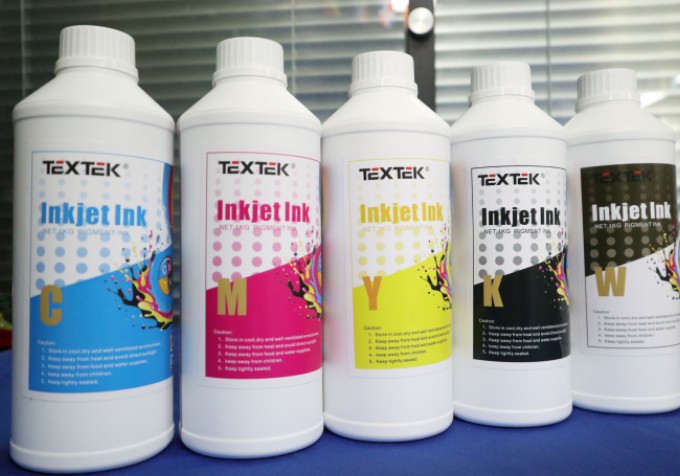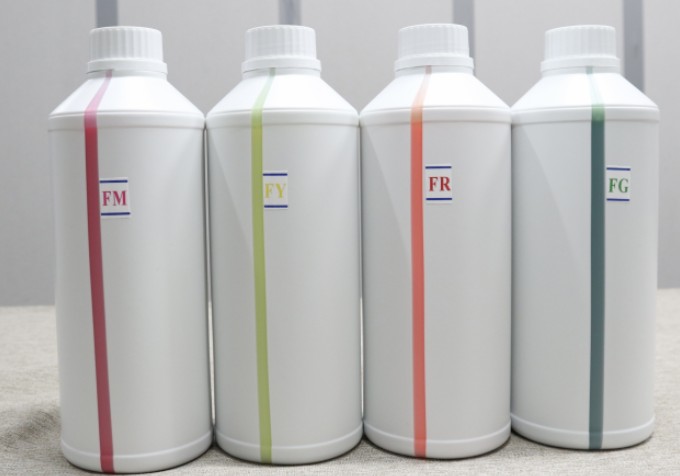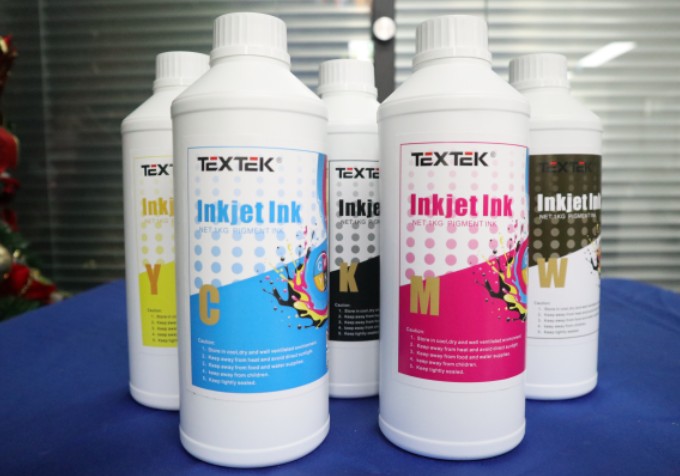No one ink will solve all problems, and no printer will work with all ink types, but if you know what you need to do, you can narrow down the basics of your business. Next, this article will introduce the difference between dye ink and pigment ink in the printing industry.
Dye Ink
What is dye ink?
Dye ink generally refers to water-soluble ink, but there are also solvent-based inks made of alcohol-soluble/oil-soluble dyes. Pigment ink is insoluble in water, so it needs to be ultra-finely dispersed before it can be applied. The ink produced with pigment has a narrower color gamut and darker colors, but the black ink is indeed sharp, burr-free, waterproof and light-resistant.
Water-soluble dye ink requirements for dyes:
(1) Good water solubility
(2) strong coloring power
(3) bright and pure color
(4) The aqueous solution is stable and does not deteriorate
(5) Strong color and weather resistance
Advantages of dye ink:
1. No clogging nozzle, easy to be absorbed by the material after printing
2. Strong color reproduction ability, bright and eye-catching printing colors
3. Low cost
Disadvantages of dye inks:
Fading easily in direct sunlight or soaking in water.
Pigment Ink
Pigment ink is called Pigment Ink in English, which is a dispersion composed of particles. Used to make printer ink.

What is pigment ink?
Pigment ink (Pigment Ink), also known as oily ink. It is composed of extremely small, water-insoluble solid pigment particles. This kind of particles can strongly cover the surface of the medium during the inkjet printing process, and has very strong waterproof and light-proof capabilities.
Advantages of pigment ink:
1. More flexible printing
2. Anti-UV
3. Extended durability and good water resistance
The difference pigment ink and dye ink
1. Different particle sizes
(1) Pigment ink: a dispersion composed of particles whose minimum particle size ranges from nanometers to micrometers, which is much larger than the molecular diameter of dye inks. The particle size of pigments mainly used in the manufacture of pigment inks can be divided into nano-scale and micron-scale. The average particle size (LD50) of nano-scale is 40 to 125 nm, and the largest particle size (LD90) cannot exceed 180 nm; micron-scale the particle size is in the range of 0.125 to 0.300 microns.
(2) Dye ink: The dye colorant is mainly in the form of a single molecule, which is completely dissolved in the ink. Its colorant has many hydrophilic particles, which are small and easy to dissolve, and can be dissolved in water or other chemical solvents. Dye ink is a molecular-level fully soluble ink, generally with a diameter of 1 to 2 nanometers.
2. Different waterproof performance
(1) Pigment ink: It is insoluble in water, so it can be applied after ultra-fine dispersion. When the printing paper encounters moisture, it has strong water resistance and is not easy to smudge.
(2) Dye ink: it belongs to water-soluble ink and is easy to dissolve. Therefore, when the printed manuscript encounters moisture, it will dissolve the colorant that was originally fixed on the medium again, and it will continue to spread around with the flow of water. Causes severe smudging.
3. Different chemical properties
(1) Pigment ink: It has good chemical and optical stability, good water resistance and light resistance, relatively high safety, and relatively high color sharpness and density during printing. When larger pigment aggregates are subjected to ultraviolet rays and ozone, only the surface layer will be destroyed, while the colorant in the inner layer will still maintain its color characteristics, so it has high light resistance and weather fastness.
(2) Dye ink: its colorant will be directly exposed to the air, so under the action of light and ozone, the chemical chain of the dye colorant will be broken, causing the colorant to change color and other phenomena, which will make the printout fade. Then it will affect its storage performance.
4. Different effects
(1) Pigment ink: It is easy to be absorbed by the material after inkjet printing. When it is printed on a flat and smooth paper, because of its good light emission performance, its color reduction ability is relatively strong, so the printed image is more colorful.
(2) Dye ink: It does not have the polymer protection of the surface layer of pigment ink, so under harsh conditions, the molecules will easily decompose, resulting in fading.
5. The printhead blockage is different during use
(1) Pigment ink: Its particles are large, and it is generally easy to cause plugging, which will affect the color of the printed image.
(2) Dye ink: It is not easy to block the printhead, even if it is blocked, it is easier to unblock the printhead.
6. The principle of color rendering is different
(1) Pigment ink: mainly through colorants or pigments, which are physically attached to the surface of the medium (such as copy paper or printing materials, etc.) in a physical form (using a polymer as a binder) and then develop color.
(2) Dye ink: It needs to penetrate into the molecular gap of the medium and precipitate before forming a color.
Pigment ink and dye ink, which one is better?

1. In terms of durability
(1) Pigment ink: relatively waterproof and light-resistant, not easy to fade, and will not smudge, so the printed works can be preserved for a long time.
(2) Dye ink: Generally, it does not have waterproof performance, and its light fastness and light fastness are also poor, so the printed works should not be stored for a long time.
2. In terms of color
(1) Pigment ink: The printed pictures generally have good waterproof, anti-light, anti-oxidation and preservation properties, but the ability to restore colors is slightly worse.
(2) Dye ink: It has good color reproduction ability, but because the printing manuscript is relatively poor in waterproof, light resistance and oxidation resistance, it is still prone to fading after long-term storage of pictures.
3. In terms of printing
Generally, some pigment inks can only be printed on RC waterproof photo paper, but not on PVC lamination-free card materials, cast-coated glossy photo paper, and non-waterproof photo paper. But there are also some pigment inks that can print a variety of materials, so when printing more varieties of printing materials with pigment inks, you need to choose the right product carefully.
4. In terms of price
From the perspective of ink prices, pigment inks are generally much more expensive than dye inks, but if you want to account for the cost increase in printed works, it is still relatively small.

If you are currently using dtf printing, we recommend that you give priority to
TEXTEK dtf pigment inks! If you have any questions about dtf, feel free to consult
TEXTEK.
TEXTEK's business covers many countries around the world, including emerging markets and mature markets. We have a complete sales system and are committed to using our professional knowledge and first-class service to help customers improve their digital printing business.
.jpg)



.jpg)
